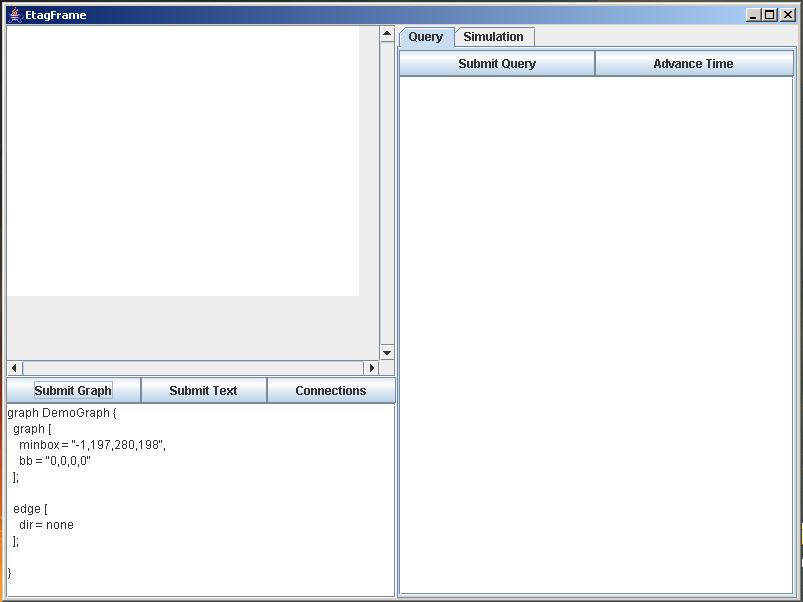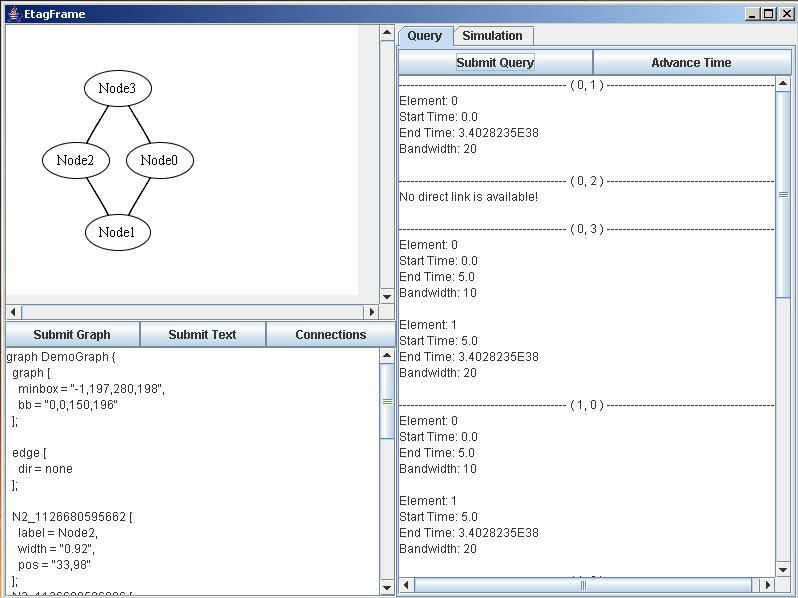ETAG GUIBased on the ETAG algorithm by Edy Tan and Andres Guedez Advisor: Prof. David StarobinskiIntroductionThe ETAG GUI is a Java Swing front end to the ETAG algorithm. ETAG is a file transfer scheduling algorithm based on the All-Slots algorithm developed by the Department of Energy for their Ultrascience Net. This UltraScience Net is a very high speed network created by the DOE with the purpose of having dedicated lines for their scientists to transfer very large files accross. Faced with the troublesome task of sometimes having to transfer data sets in the Petabyte range, the DOE realized that their network could be much improved if they provided links across which guaranteed speed and bandwidth could be achieved. Please refer to the DOE UltraScience Net webpage for more information.ETAGETAG is based on the Floyd-Warshall All-Pairs Shortest Path algorithm. The main purpose of the algorithm is to find the "best path" from any two nodes across the network while taking into consideration the amount of bandwidth required and the time that the transfer must be scheduled for. In order to do this, ETAG carries out the following steps:
GUIThe purpose of the GUI is to provide a tool that makes it easier to see and understand the inner workings of the algorithm. Once the GUI is completely finished it will be able to create timetables and plots that allow the user to analyze the results after running a simulation. The ability to graphically analyze the data will make it much easier for the researcher to separate those changes that work best from those that don't when trying to optimize the algorithm.RequirementsThe GUI requires the following external libraries in order to compile:
 At startup.  Running. User ManualFor instructions on how to use the program please read the user manual.DownloadClick here to download the code.How to Compile
AcknowledgmentThis research is supported by the US Department of Energy under ECPI grant "A Theory of Stability in Communication Networks" (DE-FG02-04ER25605). Any opinions, findings, and conclusions or recommendations expressed in this material are those of the author(s) and do not necessarily reflect the views of the US Department of Energy. |
|
Photonics Building, Room 413
8 St Mary's Street,
Boston MA 02215
Initial web site created by Sachin Agarwal (ska@alum.bu.edu), Modified by Weiyao Xiao (weiyao@alum.bu.edu), Moved to TWiki backend by Ari Trachtenberg (trachten@bu.edu). Managed by Jiaxi Jin (jin@bu.edu).
